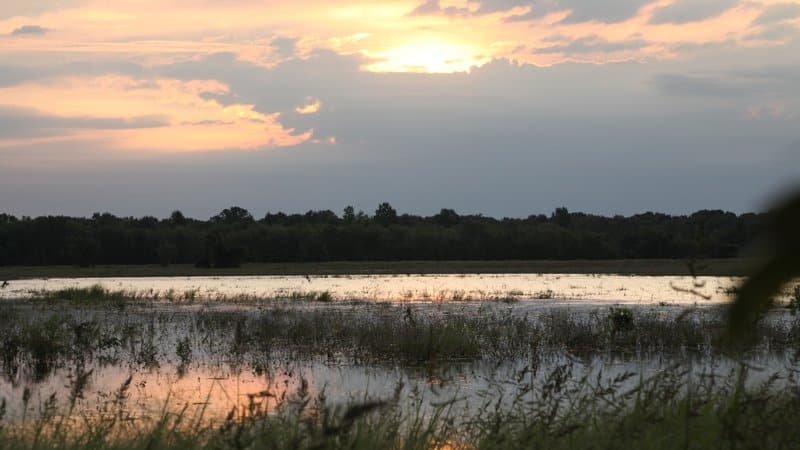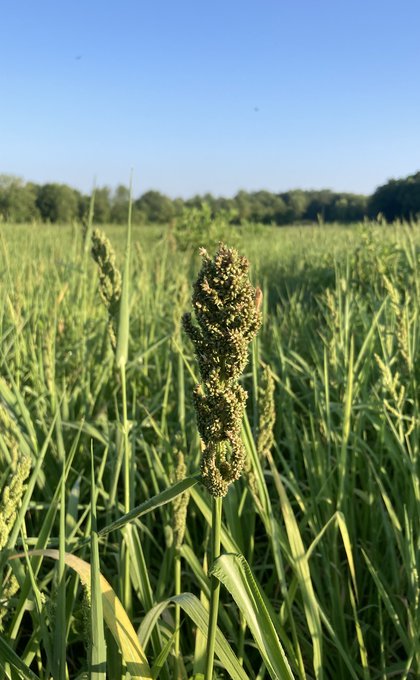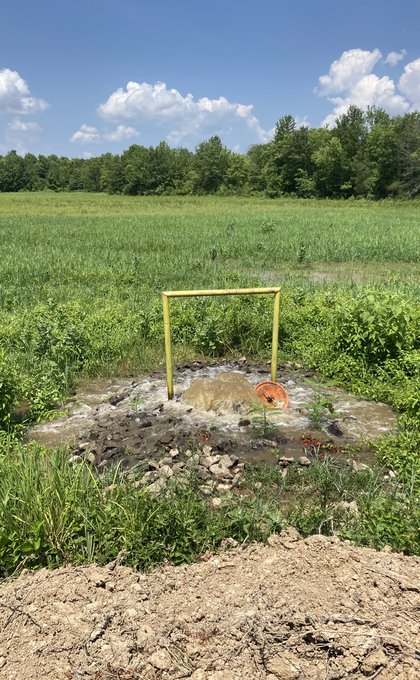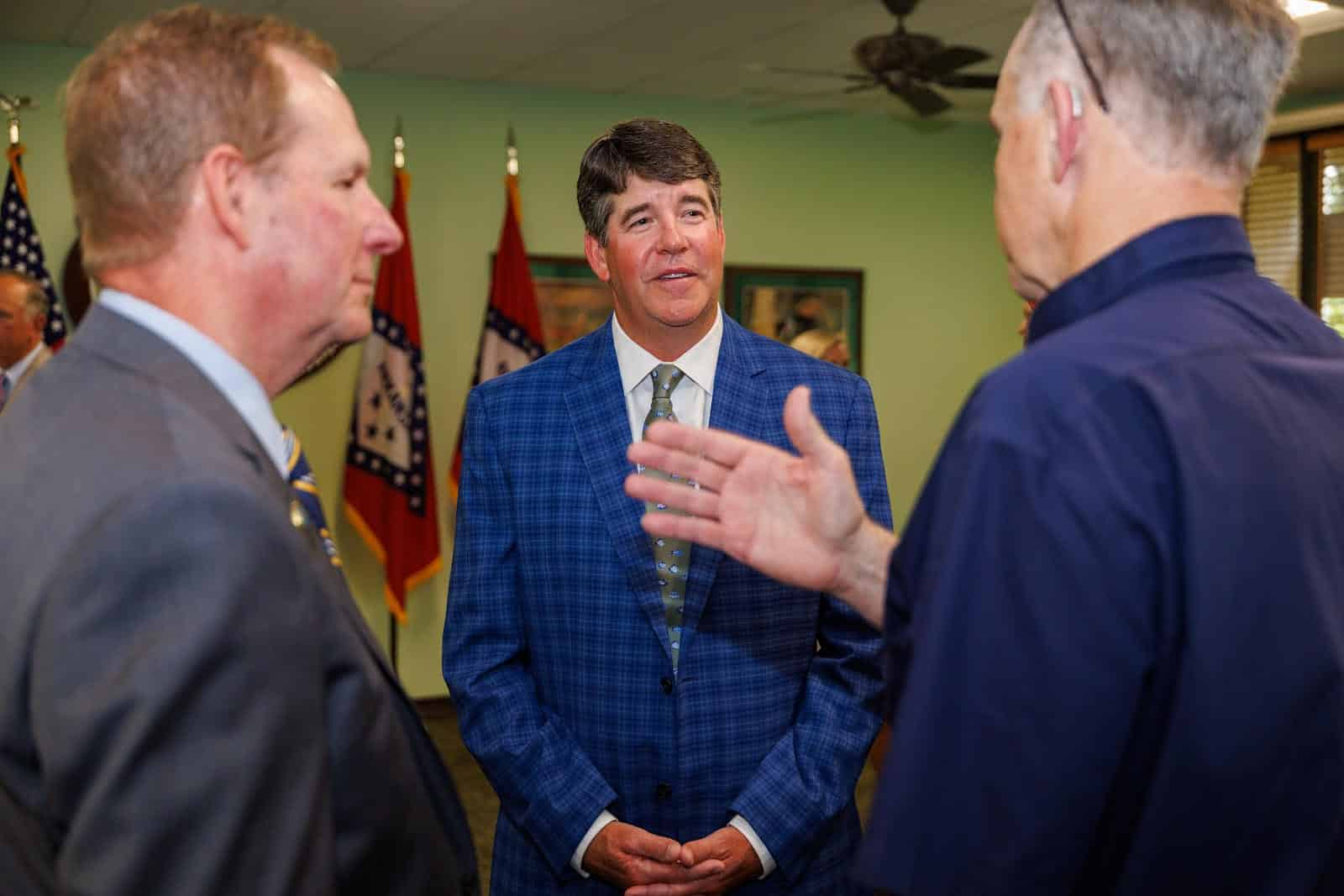Ed Gordon Point Remove WMA Flying High into Waterfowl Season
BY Jim Harris
ON 10-26-2022

Oct. 26, 2022
Jim Harris
Managing Editor Arkansas Wildlife Magazine
BLACKWELL – Residents near Ed Gordon Point Remove Wildlife Management Area might have noticed all the airplanes flying around the last two days of September. Several crop dusters, contracted by the Arkansas Game and Fish Commission were flying nearly nonstop to deliver fertilizer and lime to 350 acres of the WMA’s moist-soil units.

“It’s not the first time we’ve done any of it; we’ve put quite a bit of (agricultural) lime and fertilizer on the ground, but this was the most we’ve ever done at one time. It’s the most substantial amount we’ve put on the land,” Alex Zachary, an AGFC biologist who manages the WMA, said. “We had crop dusters rolling in, and a lot of folks around here all the way to Morrilton were trying to figure out what was going on, seeing all the crop dusters at one time.”
The soil augmentation should significantly boost nutrient levels and balance pH in the moist-soil units of the WMA. The payoff should be in plenty of important foods for migrating waterfowl in future years.
When the AGFC acquired the land for Ed Gordon Point Remove WMA in the late 1980s, the acreage had served as soybean farmland and a lot of the ground was depleted of important nutrients for plant growth.
“We’ve been managing the moist-soil units for several years, so we’re just trying to add some of that (nutrients) back,” Zachary said. “This was our first opportunity to do a more large-scale fertilizing. Hopefully, moving forward over the next few years we’ll start seeing the benefits of that. It’s an ongoing process, and we’ve got quite a bit more ground to work on.”
Fertilization wasn’t the only step in the process of preparing these units for waterfowl season. Drawdowns, cleated rolling, subsoiling, disking, supplemental planting and irrigation all take place annually on the area.
With some spring and summer mechanical manipulation – including early spring cleated-rolling followed by ripping and disking – about 200 acres were then planted in Japanese millet and barnyard grass (a wild millet). This supplemental planting will provide a food source this year, with other moist-soil plants expected to come on strong next year from the rejuvenated seedbed. Zachary said there are already some really good stands in other moist-soil units this year.
Zachary said this latest work is connected to a series of projects at Ed Gordon Point Remove that began around 2013. At that time, Southwestern Energy Co., which obtained natural gas out of the nearby “Fayetteville Shale Play,” was winding down operations. Working with Ducks Unlimited, Southwestern Energy donated funds to a conservation project to mitigate water use and became a donor and partner with the AGFC in a renovation project with three major phases: (1) the reshaping of existing moist-soil units and levees to improve water movement, as well as the building of three new impoundments totalling 70-75 acres; (2) the excavation of an irrigation canal, making it deeper and wider, to serve as a tailwater recovery ditch; and (3) installation of a new electric relift pump and 7 miles of underground pipeline on the WMA that was completed in 2020, allowing for individual management of each moist-soil unit.
“What this work did was give us the ability to fine tune our management and have a lot better control with what’s going on out here,” Zachary said. “Now we can turn a pump on and make it rain out here. We’re getting the most bang out of our buck with our moist-soil habitat.”
The new relift pump, which draws from Point Remove Creek, went operational in November 2020. In addition to pumping from the creek, the AGFC has the ability to buy water from the Point Remove Wetlands Reclamation and Irrigation District. “We have used that new pumping station to help with fall flooding for two years now,” Zachary said. “This is the third season we’ll be doing that. This past summer during the growing season was the second summer we’ve utilized it very heavily for irrigation. This past summer, as dry as it’s been, we started irrigating around the first of July and pumped straight into the middle of September.”
As for what to expect in the way of arriving ducks on the WMA, Zachary says it’s a tough call. Last year was one of the lowest numbers of ducks in the Arkansas River Valley in recent years. The state was dry through mid-December.
“The food is here. The other part of it will be the water,” he said. “The long-term forecast is looking relatively dry. Weather forecasters are indicating there won’t be any appreciable rainfall until after the first of the year.”
The good news is that this newest version of a water pump allows staff to run it under a little lower water conditions than the pumps the WMA had in the past. They still have those pumps and will use them when the creek is high. Because of the drought conditions, the AGFC may have to buy some water from the Point Remove Wetlands Reclamation and Irrigation District for fall flooding.
“We have to be selective where we put it and try to get a little bit of water spread out on the landscape. When it’s this dry, it takes a lot of water, and you’re losing several inches of it into the ground on the front end,” Zachary says.
Recent News

Arkansas Wildlife Weekly Fishing Report
Jul. 10, 2025

Lonoke aquaculturist named to AGFC
Jul. 10, 2025
Subscribe to Our Weekly Newsletter E-mails
Don’t miss another issue. Sign up now to receive the AGFC Wildlife Weekly Newsletter in your mailbox every Wednesday afternoon (Waterfowl Reports are published weekly during waterfowl season and periodically outside the season). Fishing Reports arrive on Thursdays. Fill in the following fields and hit submit. Thanks, and welcome!
